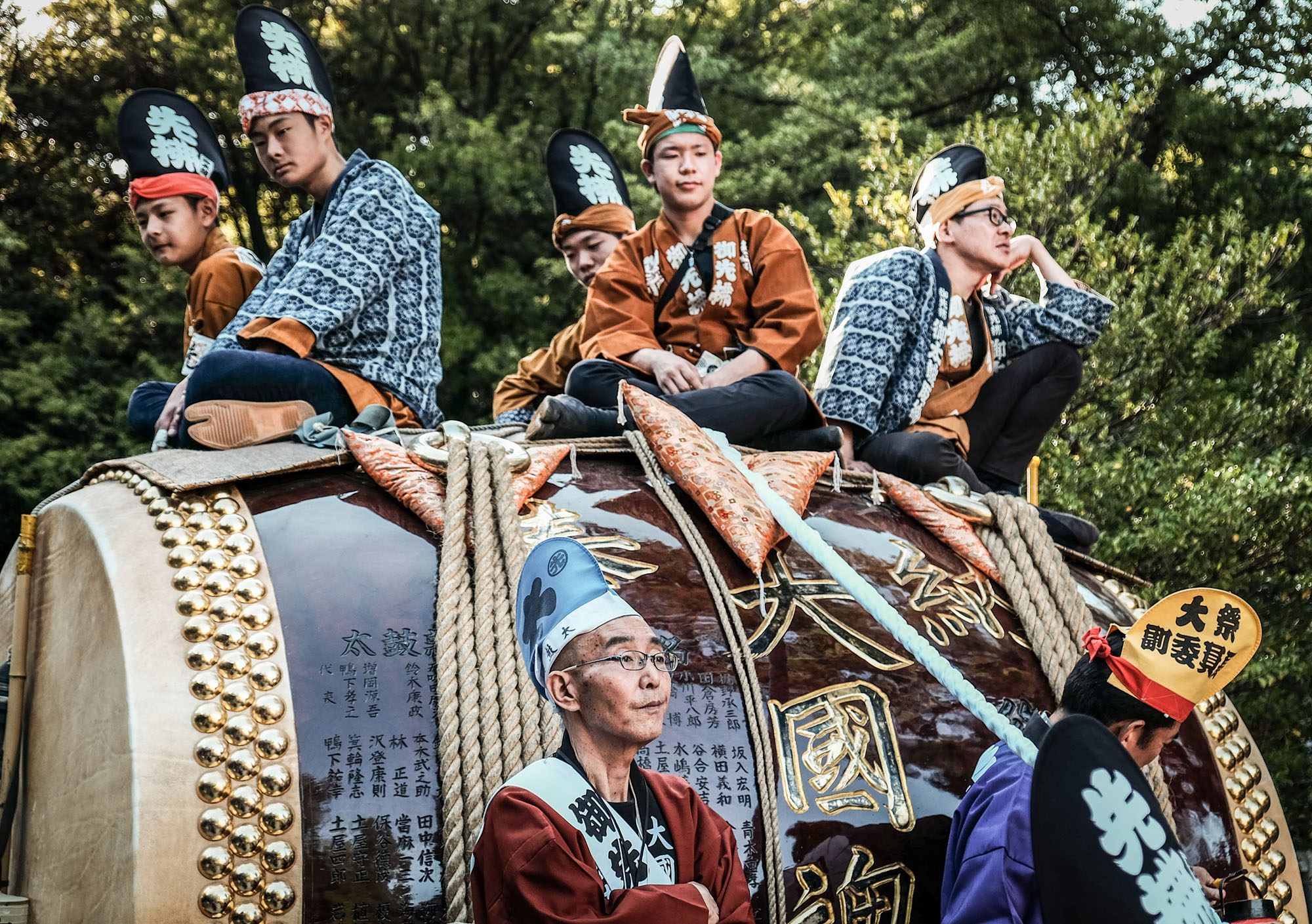Okunitama Shrine in the western Tokyo suburb of Fuchu sits at the end of a long, broad shopping street lined with towering zelkova trees. After passing under the massive, ten-meter-high concrete torii gate, one sees two smaller shrine structures, two gorgeous wooden gates, a covered sumo ring, and an elegant temizusha (hand washing basin). Here, commercial bustle fades behind as a long history of Shinto worship stretches ahead.
I live just a bike ride away from the shrine and enjoy its busy rhythms. In September, the Chestnut Festival is quiet and folksy, with several hundred charming paper lanterns slowing everyone down for an evening stroll along the main approach to the shrine. In November, excited children wearing ceremony apparel add color to the shrine's grounds for shichi-go-san (the family celebration of children reaching the ages of 7, 5 and 3). In January, nearly 500,000 visitors come to the shrine over a five-day period to stand in very long lines before observing their rites of hatsumōde for the new year.
The shrine's official website sets its age at approximately 1,900 years, when six regional shrines came together to establish a single place of worship to various kami (gods) that had been formerly residing in disparate areas of what was then known as Musashi Province. To celebrate this point of unity in the shrine's history, there is a festival during Golden Week called Kurayami Matsuri (Darkness Festival). After plenty of preparty carousing leading up to the big day, the culminating events take place on the evening of May 5, when eight mikoshi (portable shrines) depart dramatically one-by-one through the gate of the main building, carrying the deities into nearby neighborhoods.



















With your current subscription plan you can comment on stories. However, before writing your first comment, please create a display name in the Profile section of your subscriber account page.